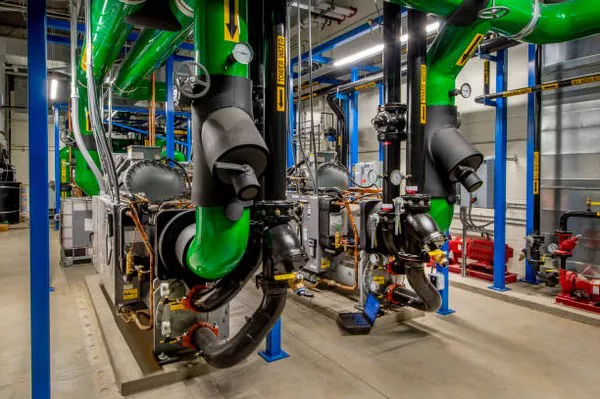A central air compressor is a vital component of air conditioning systems that ensures the efficient operation of heating, ventilation, and air conditioning (HVAC) systems. It plays a crucial role in compressing and circulating refrigerant throughout the system, helping to maintain comfortable indoor temperatures. This article explores what a central air compressor is, how it works, its types, applications, and maintenance tips, providing a comprehensive understanding of its significance in modern HVAC systems.
Understanding Central Air Compressors
Definition
A central air compressor is a mechanical device that increases the pressure of refrigerant gas, allowing it to flow through the air conditioning system. It serves as the heart of the system, facilitating the refrigeration cycle that is essential for cooling indoor spaces.
The Refrigeration Cycle
To understand the function of a central air compressor, it’s important to grasp the basics of the refrigeration cycle, which involves four key processes:
Evaporation: Refrigerant absorbs heat from indoor air, turning from liquid to gas.
Compression: The compressor increases the pressure of the refrigerant gas, raising its temperature.
Condensation: The hot, high-pressure gas releases heat to the outside air, condensing back into a liquid.
Expansion: The refrigerant passes through an expansion valve, dropping in pressure and temperature before returning to the evaporator.
Key Components of a Central Air Compressor
Compressor Unit: The core of the system that compresses the refrigerant.
Condenser: Releases heat absorbed by the refrigerant to the outside air.
Expansion Valve: Regulates the flow of refrigerant into the evaporator.
Evaporator Coil: Absorbs heat from indoor air, allowing for cooling.
How a Central Air Compressor Works
The Compression Process
The compressor operates by utilizing the principles of thermodynamics to compress refrigerant gas. Here’s a step-by-step breakdown of the process:
Inlet Phase: Low-pressure refrigerant gas enters the compressor through the inlet valve.
Compression Phase: Inside the compressor, the gas is compressed, significantly increasing its pressure and temperature.
Outlet Phase: The high-pressure gas exits the compressor and moves toward the condenser unit.
Types of Compressors
There are several types of central air compressors, each with unique characteristics and applications:
Reciprocating Compressors:
Description: Uses a piston-driven mechanism to compress refrigerant gas.
Applications: Common in residential and light commercial systems.
Advantages: High efficiency and reliability.
Scroll Compressors:
Description: Features two spiral-shaped scrolls, one fixed and one orbiting, to compress refrigerant.
Applications: Widely used in residential air conditioning systems.
Advantages: Quiet operation and high efficiency.
Rotary Compressors:
Description: Uses rotating elements to compress gas, available in both single and twin-screw designs.
Applications: Suitable for various commercial HVAC systems.
Advantages: Compact design and smooth operation.
Centrifugal Compressors:
Description: Utilizes high-speed rotating blades to compress refrigerant gas.
Applications: Commonly found in large commercial and industrial systems.
Advantages: High efficiency at large capacities.
Applications of Central Air Compressors
Central air compressors are crucial in various applications beyond residential air conditioning:
Commercial HVAC Systems:
Used in office buildings, shopping malls, and hospitals to provide cooling and heating.
Industrial Cooling Systems:
Essential for processes that require temperature control, such as manufacturing and food processing.
Refrigeration:
Plays a vital role in commercial refrigeration units, ensuring food safety and quality.
Heat Pumps:
Used in heat pump systems for both heating and cooling applications.
Advantages of Central Air Compressors
Energy Efficiency: Modern central air compressors are designed to operate efficiently, reducing energy consumption and utility bills.
Consistent Comfort: They provide uniform cooling throughout a space, ensuring comfortable indoor conditions.
Durability: High-quality compressors are built to last, requiring minimal maintenance over time.
Environmental Impact: Energy-efficient compressors contribute to lower greenhouse gas emissions by reducing electricity demand.
Maintenance Tips for Central Air Compressors
Regular maintenance is essential for ensuring the longevity and efficiency of your central air compressor. Here are some tips:
1. Regular Inspections
Schedule annual inspections with a certified HVAC technician to assess the compressor’s condition and performance. This can help identify potential issues before they escalate.
2. Clean the Condenser Coils
Dust and debris can accumulate on condenser coils, reducing efficiency. Clean the coils regularly to ensure optimal heat exchange.
3. Replace Air Filters
Dirty air filters can restrict airflow, causing the compressor to work harder. Check and replace filters every 1-3 months, depending on usage and environmental factors.
4. Monitor Refrigerant Levels
Low refrigerant levels can indicate leaks or issues within the system. Have a technician check and recharge refrigerant levels as needed.
5. Lubricate Moving Parts
Ensure that all moving parts are adequately lubricated to prevent wear and tear. This helps maintain efficient operation and reduces noise.
Troubleshooting Common Issues
1. Compressor Won’t Start
Possible Causes: Power supply issues, faulty start capacitor, or a tripped circuit breaker.
Solution: Check power connections and reset circuit breakers. Consult a technician if the issue persists.
2. Inadequate Cooling
Possible Causes: Low refrigerant levels, dirty filters, or a malfunctioning compressor.
Solution: Check filters and refrigerant levels, and schedule professional service if needed.
3. Unusual Noises
Possible Causes: Loose components, worn bearings, or mechanical issues.
Solution: Inspect the compressor for loose parts and contact a technician for repairs.
Conclusion
A central air compressor is an essential component of modern HVAC systems, playing a critical role in maintaining comfortable indoor environments. Understanding its operation, types, applications, and maintenance requirements is vital for homeowners and professionals alike. By investing in a high-quality central air compressor and adhering to regular maintenance practices, you can ensure optimal performance, energy efficiency, and longevity of your HVAC system. Whether for residential, commercial, or industrial applications, a reliable central air compressor is key to achieving effective climate control.
You Might Be Interested In

